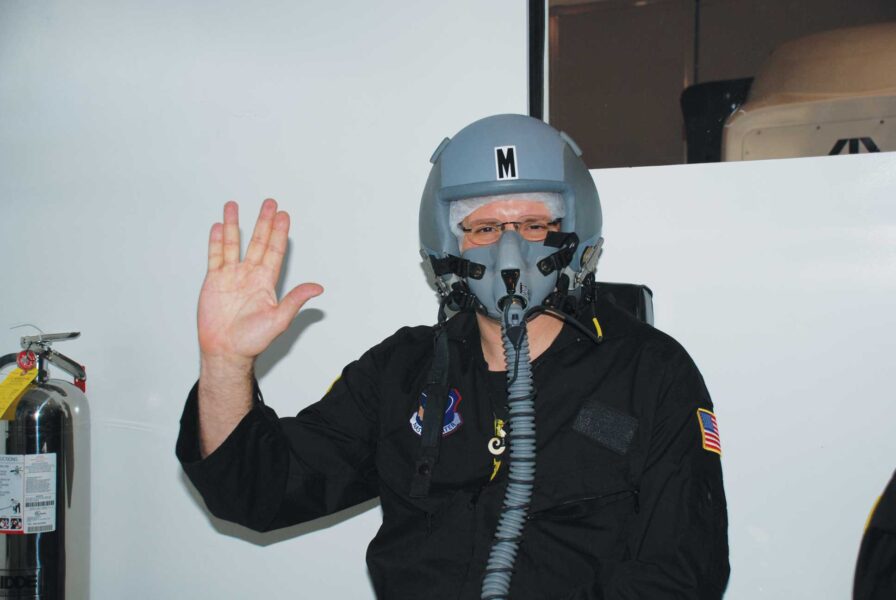Our columnist reports on his harrowing round of astronaut training.

Erika B. Wagner / MIT
Some things you can take for granted — such as gravity and air. Except when you can’t. I spent a couple January days learning how to deal with radical alterations in these basics as I prepared for an opportunity to briefly leave our familiar world and see things anew.
I was fortunate to be invited to train for private suborbital spaceflight with the first class of scientist/astronauts. Five women and 7 men are planning to conduct experiments on these new spacecraft, possibly as early as 2011.
The classroom was the easy part. After learning all that can go wrong in altitude training and the danger signs you can’t ignore (sharp tooth pains must be immediately reported because expanding air pockets can make your teeth explode!), we donned helmets and masks and entered a decompression chamber. After a half-hour of breathing pure oxygen to flush out nitrogen and avoid the bends, our trainers reduced the pressure. Lights were lowered to help us recognize the visual symptoms of hypoxia, and simulated altitudes were announced every thousand feet.
At 18,000 feet we removed our masks. The idea is to purposefully bring on hypoxia in a controlled setting so we learn our reactions and limits. We performed various intellectual, mathematical, and mechanical tests and recorded our symptoms. One classmate slumped to the ground unconscious but was quickly revived when given oxygen. After 20 minutes I felt numb and drowsy. I thought I was performing well, but my final paper exercise — a maze — was an incoherent scrawl.
The centrifuge offered a greater challenge. Our trainers explained techniques to avoid blacking out under increasing g-forces. But no matter how much they prepared us, I was a little freaked out when they sealed me in the chamber and began the countdown. I had sweaty palms and a racing heart. But I knew my image and voice were being webcast live to hundreds of people, including my colleagues in Denver, so I tried to keep it together.
I was surprised by the intensity of the crushing, suffocating feeling when they whipped me up to 3.5 g’s (the maximum that shuttle astronauts encounter). When they accelerated me to 6 g’s (which SpaceShip2 will experience during re-entry), I had to quickly apply the anti-g straining maneuvers (clenching lower and upper body, pressured breathing) in order to keep my peripheral vision from closing in on me and to maintain consciousness.
Our final centrifuge training was a full-up simulation of an entire trip on Virgin Galactic’s SpaceShip2. The surrounding visual projections simulated the changing horizon line, receding ground, and exterior views fore and aft.
Despite the discomforts, the training was fun. As often occurs when experiencing new challenges in group situations, I quickly bonded with my fellow trainees. When one of us overcame difficulty, our personal triumphs became group successes. And on that final, full simulation, I was able to relax and enjoy the ride (except for the few moments of maximum g). The simulated views of Earth and space provided enough of a hint of the strangeness, beauty, and exhilaration of the real thing that I felt overcome with joy. “Normal” gravity and air pressure are overrated. There’s a universe out there waiting for us. Let’s go!
This article originally appeared in print in the April 2010 issue of Sky & Telescope. Subscribe to Sky & Telescope.
 0
0
Comments
You must be logged in to post a comment.